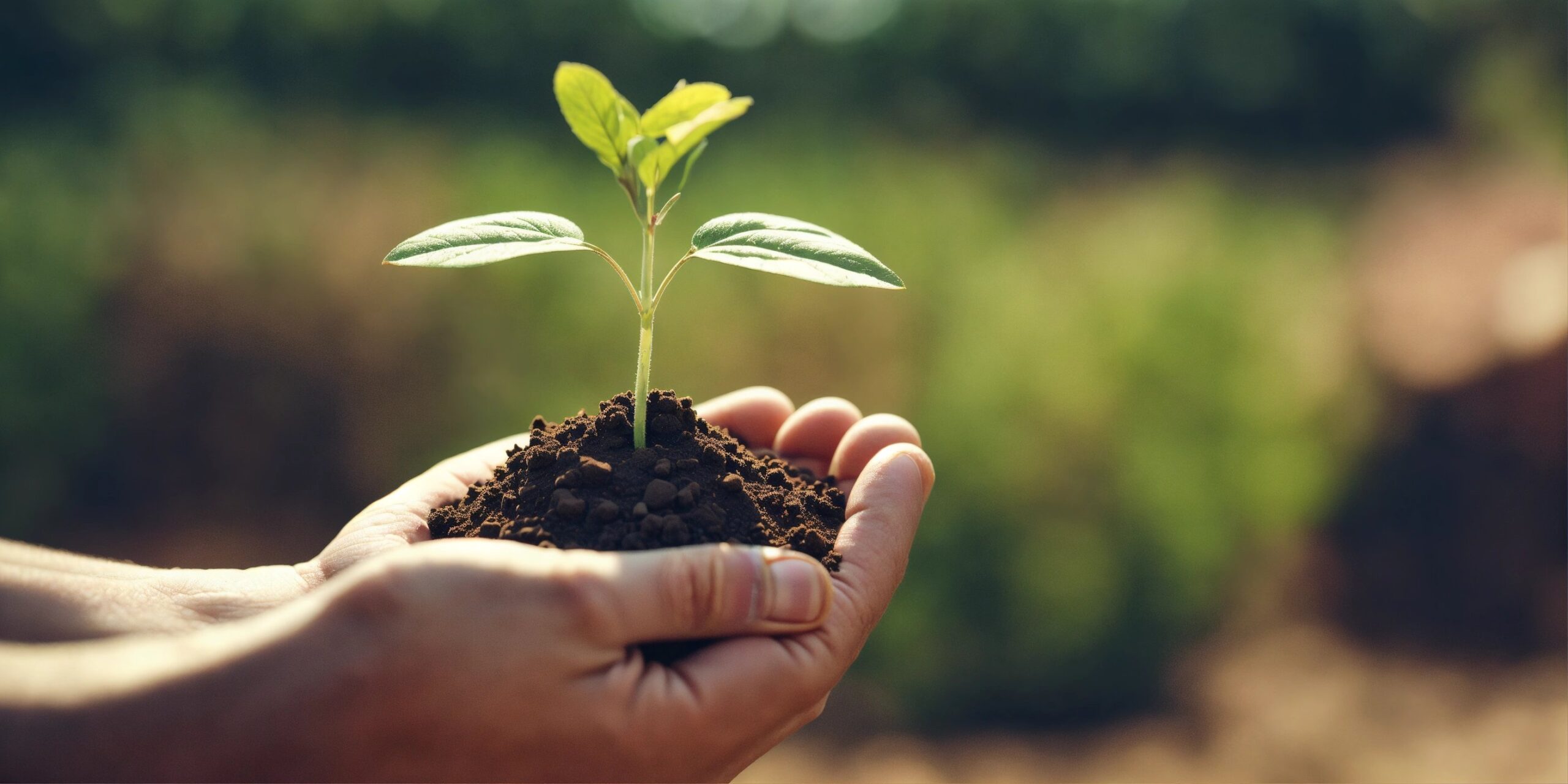What is Planterij?
Have you ever pondered why a garden thrives or how you may turn a plain piece of ground into a rich, useful oasis? Planterij then comes in handy. Planterij is a sophisticated method of plant development that combines current technology with ancient methods, not only a gardening tool. Aiming for sustainability, efficiency, and output, it’s like leveling your gardening game.
Therefore, what precisely is Planterij? Fundamentally, Planterij is the practice of ecologically sensitive, methodically maximizing plant growth employing techniques. It is about designing systems that maximize every inch of space, every drop of water, and every ounce of nutrient. Planterij can meet your circumstances whether you live on a large farm or in a busy city with little space.
Origin and History
Although Planterij sounds like a novel idea, it has strong historical background. Planterij’s core is found in old farming methods. Early farmers used several methods to keep soil fertility and increase crop production. Still guiding current Planterij methods, they applied crop rotation, organic composting, and natural pest control techniques.
With developments in science and technology, these techniques changed across millennia. New tools, materials, and methods brought about the creation of increasingly advanced systems of plant growth. Planterij combines high-tech advances including automatic irrigation, sophisticated soil sensors, and precision farming methods today, therefore fusing the best of both worlds: modernism and legacy.
Key Features
How different Planterij is from more traditional farming or gardening techniques? Let us dissect some of its salient characteristics:
- Advanced Irrigation Systems:: Planterij depends critically on effective water consumption. Modern irrigation techniques such automatic sprinklers and drip irrigation guarantee that plants get the correct water level, therefore lowering waste and encouraging better development.
- Space Utilization: Planterij shines at maximizing the space at hand. Whether your balcony is small or big, methods including vertical gardening, container plants, and raised beds help to optimize every square foot.
- Sustainable Materials:Planterij’s foundation is sustainability—that is, sustainable materials. From disposable pots to organic fertilizers, the chosen materials are ecologically benign. This method cuts waste and lessens the environmental impact of growing plants.
- Tech Integration:Modern Plantersij often uses technology to improve output and efficiency. This covers smartphone apps helping to control watering schedules and plant maintenance as well as smart sensors tracking soil moisture and nutrient levels.
Types of Planterij
Planterij takes many shapes, each suited for a different situation and necessity. There is a Planterij approach fit for your circumstances whether your goal is to maximize a rural farm or beautify an urban area.
Traditional Planterij
Traditional Planterij is based on tried-through agricultural methods spanning millennia. It calls for methods long-standing in use for centuries to grow plants and preserve soil quality.
Benefits of Traditional Planterij
- Soil Health:Crop rotation and organic composting, then, help to preserve soil fertility and structure. Rotating crops and using organic fertilizers helps the soil to remain rich and less prone to pests and illnesses.
- Biodiversity: Traditional Planterij supports a wide spectrum of plants and animals. A balanced ecology produced by this biodiversity can help naturally control pests and enhance general plant health.
Modern Planterij
Modern Planterij uses modern technology to raise plant efficiency and growth rate. It covers procedures using modern materials and technologies.
Benefits of Modern Planterij
Space Efficiency: High-density plant growing is made possible by methods including vertical farming—growing plants in stacked layers—and hydroponics—growing plants in nutrient-rich water. In places with limited space especially this helps.
Resource Efficiency:Modern techniques sometimes call for less resources than more conventional farming does. For places with limited water, hydroponics systems, for instance, consume up to 90% less than soil-based farming.
Urban Planterij
Urban Plannerij is meant for metropolitan settings when space is sometimes of limited availability. It covers techniques like wall-mounted gardens, balcony planters, and rooftop gardens.
Benefits of Urban Planterij
Green Spaces: Urban Planterij works to establish green zones in highly urbanized regions. This not only makes cities more beautiful but also helps to improve the air quality and offers a haven for urban animals.
Food Security: Growing food in cities lowers the demand for transportation and improves fresh product access. In food deserts especially, this can be quite helpful and adds to more food security
Rural Planterij
Though it can also combine current technologies, Rural Planterij is employed in bigger open areas and is generally connected with traditional farming methods.
Benefits of Rural Planterij
Scalability:: Rural Planterij can be expanded to assist major farming enterprises. It can be combined with cattle and other farming methods and lets one grow a great range of crops.
Diverse Production:More area allows rural Planterij to assist a wide variety of crops and farming techniques. Resilience against pests, illnesses, and climate fluctuations is built in part via diversity.
Benefits of Planterij
Adopting Planterij can provide several benefits, from personal delight to environmental ones.
Environmental Impact
The surroundings benefit from planterij methods. These approaches help to lessen ecological footprints and slow down the effects of climate change by stressing sustainability.
Reduced Carbon Footprint
The surroundings benefit from planterij methods. These approaches help to lessen ecological footprints and slow down the effects of climate change by stressing sustainability.
Economic Benefits

Additionally economically advantageous, planterij offers both direct and indirect cash benefits.
Cost-Effectiveness
Although building a Planterij system could have upfront expenses, over time the savings could be really large. Reduced dependency on outside inputs combined with effective use of water and nutrients will help to cut running expenses.
Job Creation
Planterij projects help to boost regional businesses and generate employment. There are chances for employment and skill development whether one runs a rural farm or an urban garden.
Personal Fulfillment
Planterij provides human benefits beyond only environmental and financial ones. Whether for food or adornment, growing your own plants offers a sense of success and a connection to the natural world. It’s a means of interacting with your surroundings and savoring your efforts.
How to Implement Planterij
Considering beginning a Planterij project? This is a detailed road map to get you going.
Planning and Design
Planning is the initial phase in using Planterij. Specify your goals: are you hoping for a tiny urban garden, a sizable rural farm, or something else entirely? Ensuring that your Planterij is both aesthetically beautiful and useful depends on careful design.
Site Assessment
Examine the features of your site including access, soil quality, and solar exposure. This evaluation will enable you to choose which plants and methods would fit your particular situation.
Choosing the Right Location
The success of your Planterij will rely much on your location.
Soil and Climate Considerations
Different plants demand different soils and climates. To guarantee best development, choose plants fit for your local environment. In arid areas, for instance, hydroponics systems or drought-resistant plants may be more suitable.
Infrastructure Needs
Think out the infrastructure your Planterij project needs. This can call for support buildings, greenhouses, or irrigation systems. Effective infrastructure planning and investment help to avoid problems and improve the performance of your system.
Implementing Technology
Modern planners sometimes use technology to track and control plant development. While mobile apps let you control watering schedules and plant care, smart sensors can measure soil moisture and nutrient levels.
Maintenance and Monitoring
Successful Planterij depends on regular maintenance. Track plant health; change watering and nutrient levels as needed; and quickly handle any insect or disease problems. Technology can help with these chores; yet, the finest results depend on hands-on attention.
Challenges and Solutions

Planterij is not an exception; every project presents difficulties. This is how you approach some typical problems
Common Issues
Pest Management: Particularly in metropolitan settings with limited space, pests can be a major problem. Use organic treatments or natural predators as part of integrated pest control plans to help to control pests.
Resource Management: can be difficult in ensuring a constant supply of fertilizers and water. Effective systems help to properly manage resources; examples of such systems are fertilizer recycling or rainfall collecting.
Innovative Solutions
Technology in Planterij
Modern technologies can offer answers for everyday problems. Automated irrigation and pest control solutions help to simplify maintenance and raise efficiency. Smart irrigation systems, for instance, can change watering plans in response to real-time soil moisture readings.
Community Involvement
Interacting with the neighborhood can also offer tools and assistance. Local gardening projects and community gardens can provide guidance, maintenance assistance, and encouragement of teamwork. Working together can help your Planterij initiative to be more successful and create a supporting network.
Future of Planterij
For Planterij, what is ahead? Planterij is likely to be very important in tackling three of the most urgent issues facing the planet going forward: urbanization, food security, and climate change. Driven by technology developments, rising awareness of environmental practices, and a growing enthusiasm in self-sufficiency and local food production, Planterij looks to have a bright future.
Technological Advancements
Technology will keep creating Planterij’s future, increasing its scalability, efficiency, and accessibility.
AI and Machine Learning
Through better decision-making made possible by artificial intelligence (AI) and machine learning, Planterij is poised for transformation. These tools can examine enormous volumes of data to forecast problems with plant health, maximize fertilizer and watering regimens, and even suggest the best plants for particular settings. Imagine a garden that almost looks after itself, instantly altering to fit new circumstances!
Robotics and Automation
Agricultural applications for robots already include planting, weeding, and harvesting among other chores. In Planterij, hydroponics systems may be managed or exact planting in vertical gardens could be accomplished with robots. Planterij will become more scalable thanks to automation, therefore lowering the demand for manual labour and enabling better management of bigger, more sophisticated systems.
Sustainable Innovations
Planterij will always center sustainability, and continuous improvements meant to lower environmental effect will come first.
Closed-Loop Systems
Closed-loop systems—where waste products from one process become inputs for another—may find increasing use in future plannerij designs. For an aquaponic system, for instance, waste from a fish tank might be fertilizing agent for plants while the plants filter the water for the fish. This drives a self-sustaining cycle that reduces resource consumption and waste.
Biodegradable and Recyclable Materials
Planterij’s future will probably see a change towards biodegradable and recyclable materials as the globe works on plastic pollution. Made from sustainable materials, pots, trays, and other gardening tools will replace plastic, therefore lowering the environmental impact of plant growing.
Urban Agriculture
Urbanization is still rising, and demand for urban agriculture follows along. Transforming cityscapes into useful green areas will depend much on Planterij.
Vertical Farms and Rooftop Gardens
Urban environments are likely to see increasing frequency of rooftop gardens and vertical farming. In a small footprint, these areas can produce a lot of food, therefore enabling towns to become more self-sufficient and less need for long-distance produce transportation. Imagine skyscrapers as vertical farms supplying the city’s inhabitants rather than only homes or businesses.
Community Gardens and Green Spaces
People’s search to interact with their surroundings and nature will also help community gardens to flourish. These common areas help to build community, offer fresh food, and help to green metropolitan areas. Leading these projects, Planterij will provide methods and systems to make these gardens sustainable and profitable.
Climate Resilience
Planterij provides ways to increase plant resilience while climate change keeps affecting agriculture.
Drought-Resistant Crops
Planterij’s future could include the creation and application of drought-resistant crops able to flourish in arid environments with little water. This is vital since, in many places of the world, water shortage becomes a more urgent problem.
Climate-Controlled Environments
Planterij may make more use of climate-controlled settings like greenhouses and indoor farms in regions of harsh weather. By shielding plants from illnesses, pests, and bad weather, these regulated environments help to guarantee constant output all year round.
Educational and Social Impact
Teaching people about sustainability, food production, and the environment, Planterij has great educational value.
Educational Programs
Using farms and gardens as living classrooms, schools and colleges might include Planterij into their courses. By teaching biology, ecology, and sustainability, these initiatives help to produce a new generation of ecologically minded citizens.
Social Enterprises
Planterij can also be the basis for social businesses offering underprivileged areas work and education. Urban gardens and farms help individuals and communities by generating jobs, supplying fresh food to food-insecure areas, and providing educational possibilities.
Global Impact
Globally, Planterij could help to solve food shortages, advance environmentally friendly development, and fight climate change.
Food Security
Food security is becoming more and more important given the estimated worldwide population of about 10 billion by 2050. By raising local food production, lowering reliance on imported food, and supporting sustainable farming methods that save the environment for next generations, Planterij may help to contribute to world food security.
Sustainable Development
Food security is becoming more and more important given the estimated worldwide population of about 10 billion by 2050. By raising local food production, lowering reliance on imported food, and supporting sustainable farming methods that save the environment for next generations, Planterij may help to contribute to world food security.
Conclusion
Planterij is a complete approach to farming including sustainability, creativity, and legacy rather than only a technique for raising plants. Planterij provides a road to reach your objectives regardless of your level of experience with gardening, passion of plants, or desire to improve the surroundings.
Answers offers Planterij for growing food, beautifying areas, and tying people with nature in a society going more and more urbanized and environmentally sensitive. Its adaptability—from urban rooftops to rural farms—allows anyone with a love of plants and a goal to build a greener, more sustainable future to fit any environment.
Planterij will keep changing going forward, adding fresh technologies, environmentally friendly methods, and community-driven projects. Growing plants is only one aspect; another is creating a better planet.
Therefore, keep in mind the ideas of Planterij whether you are growing an already-existing garden or starting one. Accept the blending of history with modernism, sustainability and efficiency, and see how your garden—and the planet—thrive.
FAQs
1. What is Planterij?
Planterij is a whole method of growing plants that blends ecological principles, current technology, and conventional gardening methods. It seeks to maximize plant development in the least possible environmental impact.
.2. How does Planterij benefit the environment?
Using sustainable materials, cutting waste, and encouraging effective use of resources like nutrients and water helps Planterij improve the surroundings. It also promotes local food production, therefore lowering the carbon footprint connected with food transportation.
3. What are some examples of Planterij practices?
Among Planterij’s techniques include hydroponics, vertical farming, organic composting, and clever irrigation system use. These methods maximize space, increase effectiveness, and advance environmentalism.
4. Can Planterij be used in urban areas?
Indeed, Planterij is quite flexible for metropolitan surroundings. Perfect for city environments, techniques include vertical farms, balcony planters, and rooftop gardens let green areas and local food production even in highly populated places possible.
5. What are the challenges of Planterij?
Managing pests, guaranteeing constant resource availability, and preserving the system are obstacles of Planterij. Still, coordinated pest management, careful resource usage, and technological integration help to solve these difficulties.




